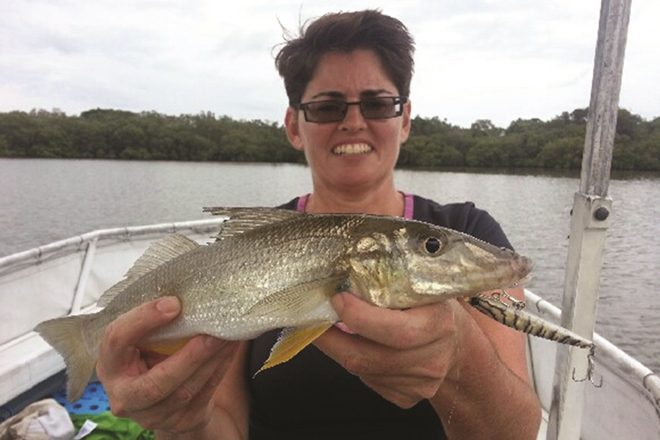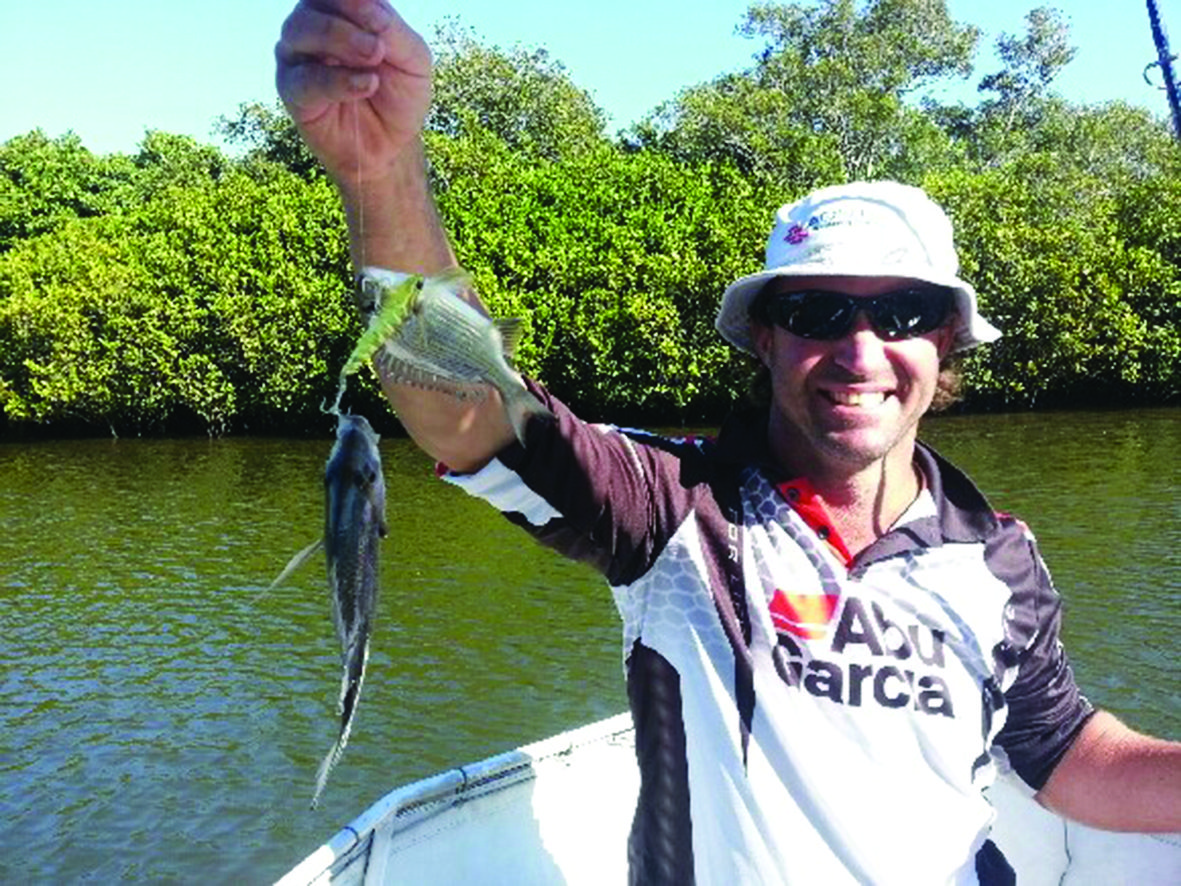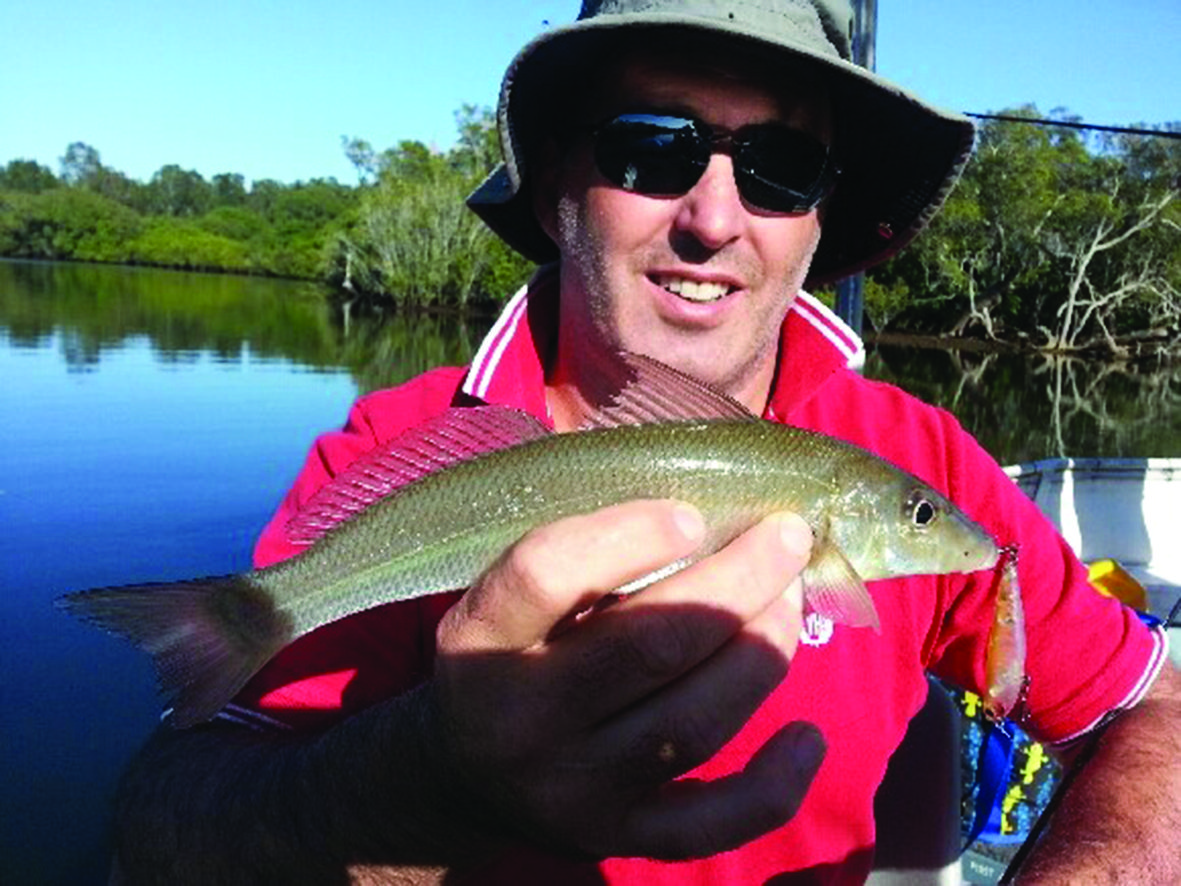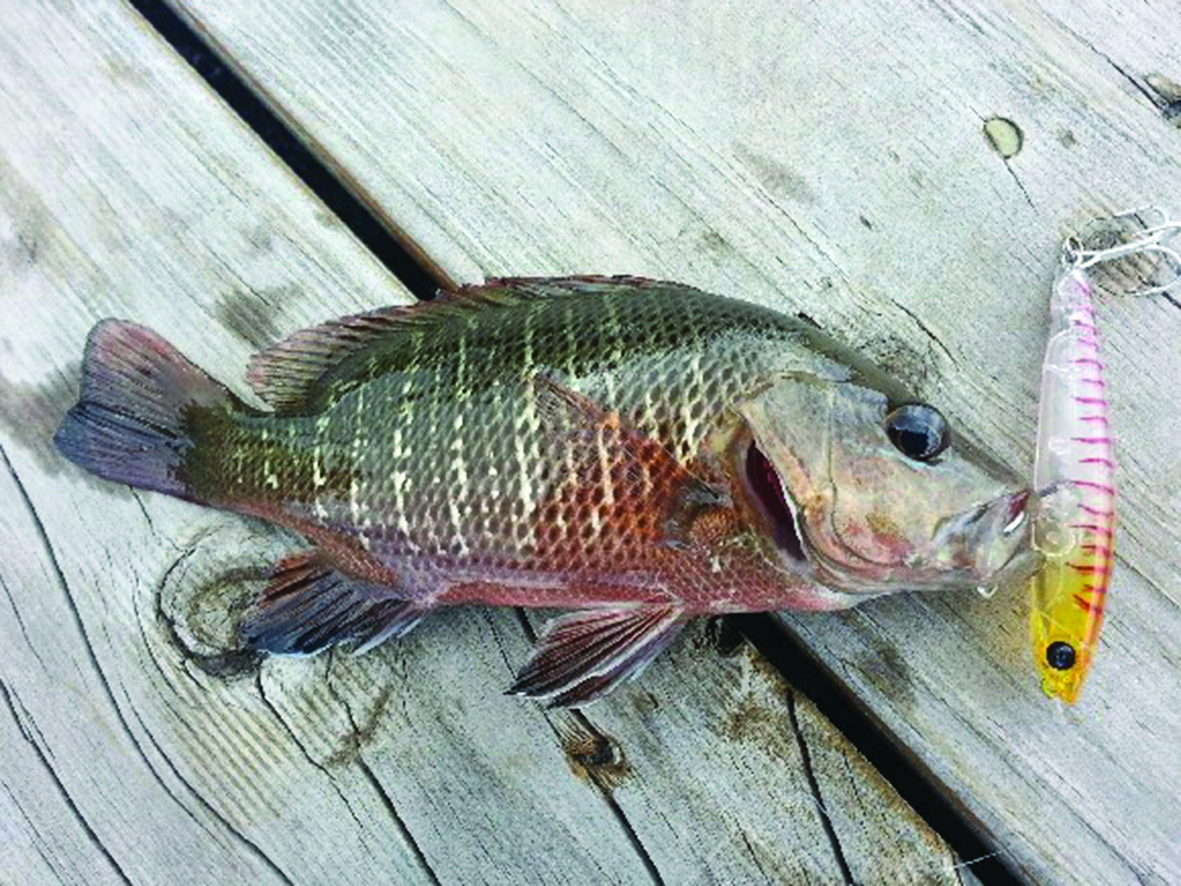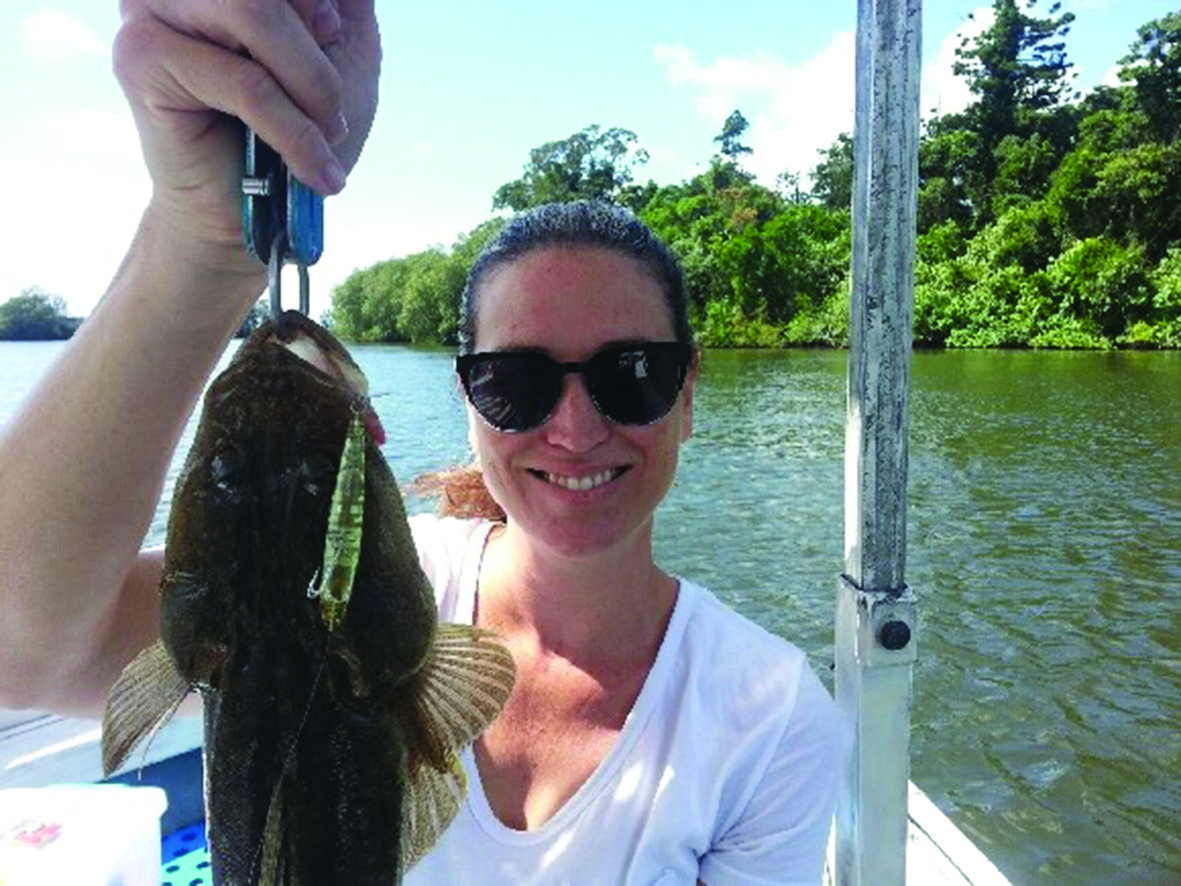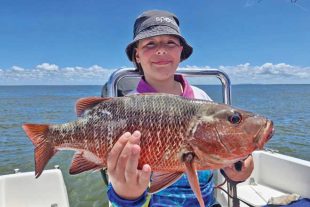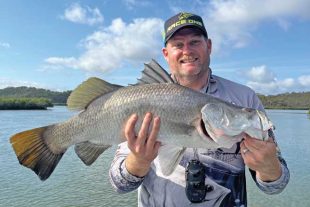G’DAY everyone; in this month’s article I will provide you with some helpful topwater tactics on how to target flathead, bream and whiting.
Fishing with stickbaits and poppers is a fantastic topwater tactic because it is easy to do and apart from producing good numbers of fish has the bonus of being visually exhilarating as you watch your lure being smashed on the surface. You don’t require any special equipment for topwater fishing.
All you need is a 7’ rod matched with a 1000-2000-size reel loaded with 6lb braid and 6lb fluorocarbon leader.
If you don’t already own a combination like this it might be worth saving for because this same outfit is also ideal for lures such as soft plastics and small hard-bodied minnows. My favourite surface lures for the job are Bassday Sugapens, Atomic K9 Walkers and small Damiki poppers.
Locations
Numerous areas in all our local rivers and creeks are suitable for surface fishing. The best places are very shallow grounds that hold bait such as yabby beds and locations with a broken sand and seagrass bottom. You’ll find heaps of these spots from the Southport Broadwater all the way to Moreton Bay.
The other important thing to remember when finding a suitable area is it must be very shallow.
In fact, for the best results I fish in 60cm of water or less. Bream have a tendency to slurp down a surface lure in water deeper than 60cm but trying to tease up whiting and flathead becomes more difficult and way less productive the deeper it gets. Most of the results on whiting and flathead come from water that is 30-45cm deep.
A great thing about topwater fishing is that having a boat is a bonus but land-based anglers can still find an abundance of good topwater grounds if they are prepared to walk along the shallow river banks and flats. Surface lures are very versatile because while diving lures and soft plastics continually foul up in seagrass, surface lures can be worked across the top of heavy vegetation.
Tides
You can surface fish at any stage of the tide but I’ve found by far the best results come from fishing the last hour of the run-in tide and the first hour of the run-out. I feel the last of the run-in allows the fish to move out of the deeper water to feed across the shallows and when the tide turns to run out they seem to spike into a feeding frenzy before the falling tide forces them back into the deeper water.
Technique
Surface poppers have a cupped faced and eject bloops of water in front of them during the retrieve, which creates a lot of noise and disruption on the surface and gets the fish’s attention. They can be worked slowly and continuously across the top in a straight line, which means that as long as the lure is blooping you don’t need to apply much action with your rod tip.
Stickbaits on the other hand are best worked with a steady retrieve while simultaneously wobbling your wrist.
 Bush ‘n Beach Fishing Magazine Location reports & tips for fishing, boating, camping, kayaking, 4WDing in Queensland and Northern NSW
Bush ‘n Beach Fishing Magazine Location reports & tips for fishing, boating, camping, kayaking, 4WDing in Queensland and Northern NSW

